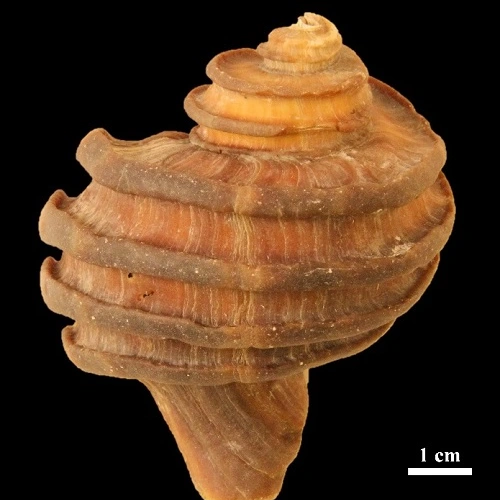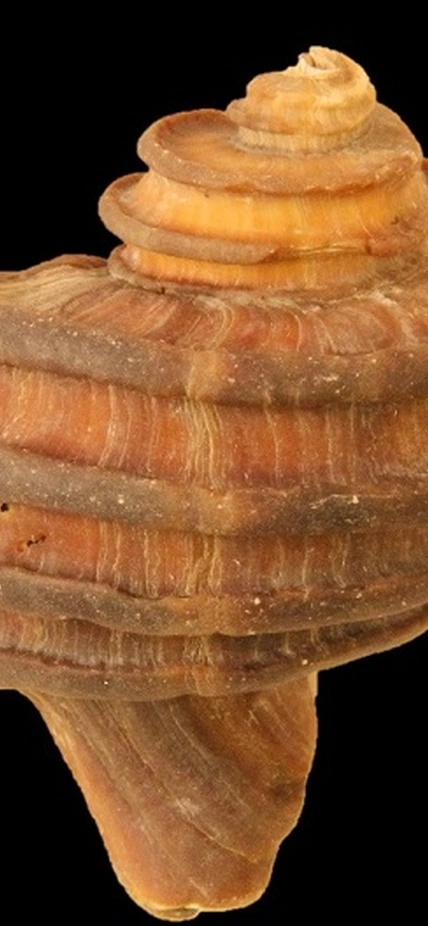Washington, D.C.— A team of Carnegie scientists have found “beautifully preserved” 15 million-year-old thin protein sheets in fossil shells from southern Maryland. Their findings are published in the inaugural issue of Geochemical Perspectives Letters.
The team—John Nance, John Armstrong, George Cody, Marilyn Fogel, and Robert Hazen—collected samples from Calvert Cliffs, along the shoreline of the Chesapeake Bay, a popular fossil collecting area. They found fossilized shells of a snail-like mollusk called Ecphora that lived in the mid-Miocene era—between 8 and 18 million years ago.
Ecphora is known for an unusual reddish-brown shell color, making it one of the most distinctive North American mollusks of its era. This coloration is preserved in fossilized remains, unlike the fossilized shells of many other mollusks from the Calvert Cliffs region, which have turned chalky white over the millions of years since they housed living creatures.
Shells are made from crystalline compounds of calcium carbonate interleaved with an organic matrix of proteins and sugars. These proteins are called shell-binding proteins by scientists, because they help hold the components of the shell together.They also contain pigments, such as those responsible for the reddish-brown appearance of the Ecphora shell. These pigments can bind to proteins to form a pigment-protein complex.
The fact that the coloration of fossilized Ecphora shells is so well preserved suggested to the research team that shell proteins bound to these pigments in a complex might also be preserved. They were amazed to find that the shells, once dissolved in dilute acid, released intact thin sheets of shell proteins more than a centimeter across. Chemical analysis, including spectroscopy and electron microscopy, of these sheets revealed that they are indeed shell proteins that were preserved for up to 15 million years.
“These are some of the oldest and best-preserved examples of a protein ever observed in a fossil shell,” Hazen said.
Remarkably, the proteins share characteristics with modern mollusk shell proteins. They both produce thin, flexible sheets of residue that’s the same color as the original shell after being dissolved in acid. Of the 11 amino acids found in the resulting residue, aspartate and glutamate are prominent, which is typical of modern shell proteins. Further study of these proteins could be used for genetic analysis to trace the evolution of mollusks through the ages, as well as to potentially learn about the ecology of the Chesapeake Bay during the era in which Ecphora thrived.

Caption: A 15-million year old fossil gastropod, Ecphora, from the Calvert Cliffs of southern Maryland. The golden brown color arises from the original shell-binding proteins and pigments preserved in the mineralized shell. Picture is provided courtesy of John Nance.
----------
This work was supported in part by the NASA Astrobiology Institute, the Deep Carbon Observatory, the Hazen Foundation, and the Carnegie Institution for Science.
